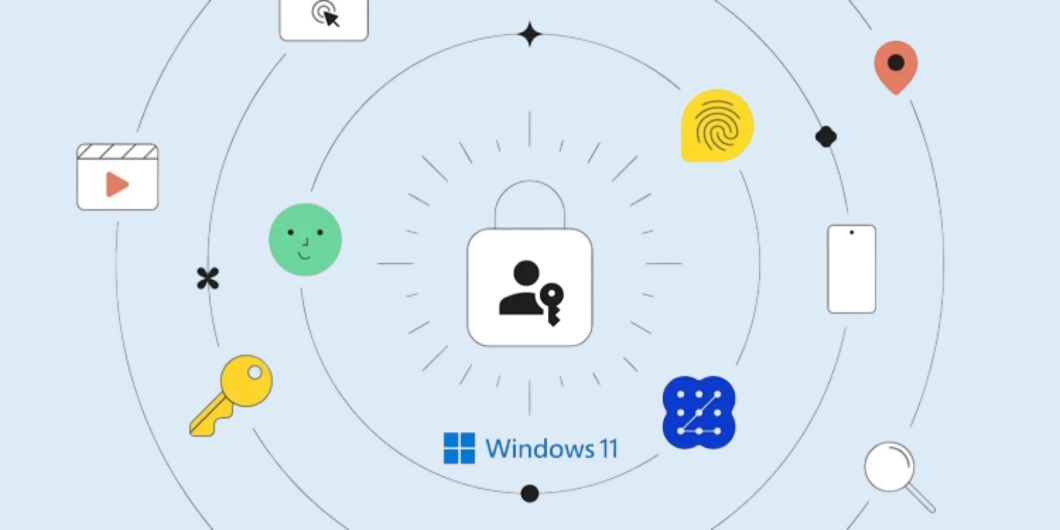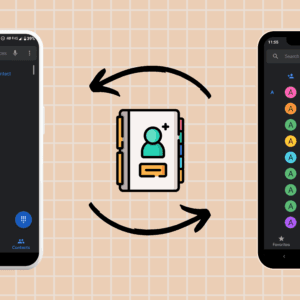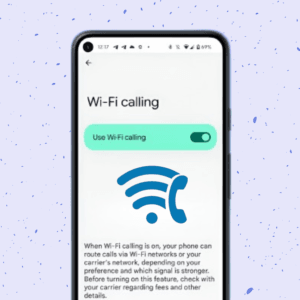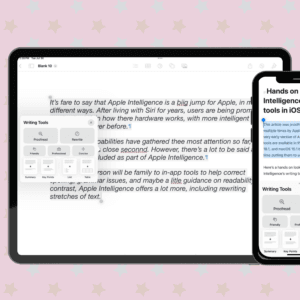If you’re tired of juggling a million passwords and stressing over keeping them secure, you’re in luck. Windows 11 introduces a nifty feature called passkeys that simplifies the whole login process while keeping your accounts safe. In this guide, we’ll dive into everything you need to know about Windows passkeys and show you how to set up and use passkeys on Windows 11.
What are Windows passkeys?
Windows passkeys are not just a convenient way to log into your Windows 11 device and compatible apps and websites, they’re also a powerful security measure. Unlike traditional passwords, passkeys leverage biometrics like your fingerprint, face, or PIN, making them more secure and harder to steal. By using passkeys, you’re essentially using a unique and unforgeable identifier, which significantly enhances the security of your logins compared to using traditional passwords.
Advantages of using passkeys
Passkeys offer numerous advantages that make them a superior choice over traditional passwords. Here are some of those advantages:
| Advantages | Description |
| Enhanced security | Passkeys use biometric data, which is unique to you and difficult to replicate. |
| Convenience | No more remembering or typing passwords. A quick scan or touch, and you’re in! |
| Speed | Logging in with passkeys is faster than entering a password, saving you valuable time in daily tasks. |
| Reduced Phishing Risk | Biometric data cannot be phished, adding an extra layer of protection. |
| Ease of Management | No need to frequently change passwords or remember complex combinations. |
Also read: How to increase laptop battery life on Windows 10 and 11.
How passkeys work
Understanding how passkeys work can give you better insight into why they are so effective. Passkeys are built on the FIDO2 standard, which stands for Fast Identity Online. This technology uses public key cryptography to ensure secure authentication without transmitting sensitive information. When you set up a passkey, a public-private key pair is created. The private key is stored securely on your device, while the public key is shared with the online service you’re accessing. During login, the service sends a challenge that your device signs with the private key, verifying your identity without exposing sensitive data.
Underlying technology
The technology behind passkeys is designed to provide maximum security with minimal hassle. FIDO2 leverages public key cryptography, a well-established and robust method of encryption. The private key remains securely stored on your device, never leaving it, while the public key is shared with the service you’re logging into. This method ensures that even if a hacker intercepts the communication, they can’t recreate the private key or gain access to your accounts. This level of security makes passkeys a reliable and advanced method for protecting your digital identity.
Comparison between Windows passkeys and traditional passwords
To really appreciate the benefits of passkeys, it helps to compare them with traditional passwords. Traditional passwords rely on something you know, which can be guessed, stolen, or phished. Passkeys, on the other hand, rely on something you are (biometrics) or something you have (a PIN), making them much more secure.
With traditional passwords, there’s always a risk of data breaches where your password can be exposed. Passkeys eliminate this risk because your private key never leaves your device, and biometrics are nearly impossible to duplicate.
Let’s look at a detailed comparison:
| Feature | Traditional Passwords | Windows Passkeys |
| Authentication Method | Something you know (password) | Something you are (biometrics) |
| Security Level | Moderate (can be stolen or guessed) | High (biometric data is unique) |
| Ease of Use | Requires remembering and typing | Quick scan or touch |
| Risk of Phishing | High | Low |
| Management | Needs regular updates | Set up once, minimal maintenance |
Also read: How to format Hard Drive and SSD in Windows 11.
Setting up passkeys on Windows 11
Before you can enjoy the benefits of passkeys, you’ll need to set them up on your Windows 11 device. The process is straightforward and user-friendly, designed to make your digital life easier. Just ensure you have a compatible device with Windows 11 and a biometric device like a fingerprint scanner or camera, or have a PIN set up. With these in place, you’re all set for a smooth and seamless setup process.
Requirements and preparation
Setting up passkeys requires some basic preparation. Ensure that your Windows 11 device is updated with the latest updates. Additionally, verify that you have a biometric device, such as a fingerprint scanner or a camera for facial recognition.
You can use a PIN as an alternative if you don’t have one. Having these prerequisites in place will ensure a smooth setup process.
| Requirement | Description |
| Windows 11 Device | Ensure your device is running Windows 11 with the latest updates installed. |
| Biometric Hardware | Fingerprint scanner or camera for facial recognition, or have a PIN set up. |
| Microsoft Account | An active Microsoft account linked to your Windows 11 device. |
| Internet Connection | Needed for initial setup and configuration of Windows Hello and passkeys. |
How to enable passkeys on Windows 11
To enable passkeys on Windows 11, navigate through the settings menu and set up Windows Hello, which supports biometric authentication methods. Follow these steps to get started.
1. Click on the Start menu and select Settings.
2. In the Settings window, click on Accounts and select Sign-in options.
3. Here, you’ll see various sign-in methods. Look for Windows Hello.
4. Click on Windows Hello Fingerprint or Windows Hello Face, depending on your device’s capabilities.
5. Follow the on-screen instructions to scan your fingerprint or set up facial recognition.
Once set up, Windows Hello will be enabled, allowing you to use passkeys.
Also read: How to fix Windows 11 Green Screen of Death.
Using passkeys on Windows 11
Now that you’ve set up passkeys, using them is a breeze. Passkeys streamline the login process, making it quick and secure. You’ll find that logging in with passkeys not only enhances your security but also speeds up your access to your device and applications, giving you more control over your digital life. Let’s look at how you can make the most out of using passkeys on Windows 11.
Logging in with passkeys
Logging in with passkeys is straightforward. When you reach the login screen, you’ll see Windows Hello options, including the biometric method you set up. Simply use your fingerprint, facial recognition, or PIN to log in without typing a password. This method is both fast and secure, ensuring a hassle-free login experience.
1. On the login screen, you’ll see options for Windows Hello (fingerprint, face, or PIN).
2. Use the method you set up (scan your fingerprint or look at the camera).
Boom! You’re logged in without typing a password.
Managing passkeys
Managing your passkeys involves viewing, deleting, or updating your biometric data to ensure everything stays secure and functional. Regularly managing your passkeys ensures that your biometric data remains accurate and up-to-date, providing the highest level of security for your device.
Viewing and deleting passkeys
If you need to view or delete your passkeys, you can do so from the Sign-in options menu in Settings. Here, you can see your registered biometric data. To delete any of the methods, select it and click on Remove. This step ensures that you can easily manage your authentication methods and maintain control over your security settings.
1. Navigate to Settings, select Accounts, and head to Sign-in options.
2. Under Windows Hello, you can see your registered fingerprints or facial data.
3. To delete, simply select the method and click on Remove.
Updating passkeys
Updating your passkeys is just as simple. If you need to rescan your fingerprint or update your facial recognition data, navigate to the Sign-in options and select the method you want to update. Follow the on-screen instructions to complete the update. Keeping your passkeys updated ensures that your biometric data is always accurate, enhancing your security.
1. If you want to update your passkeys (like rescanning your fingerprint), go to Settings, choose Accounts, and click Sign-in options.
2. Select the method you want to update and follow the on-screen instructions to re-register your biometric data.
Also read: How to fix Getting Windows ready stuck in Windows 10 and 11.
There you have it!
Setting up and using passkeys on Windows 11 is a breeze and a surefire way to boost your security while making logins quick and painless. Say goodbye to the hassle of managing passwords and hello to a smarter, safer way to access your device. Ready to set up and use passkeys on Windows 11? Give it a try and enjoy the peace of mind that comes with enhanced security and convenience.
Was this helpful?
Introducing Bhaskar, your tech-savvy neighbor turned wordsmith extraordinaire. Over the past few years, Bhaskar has become the trusted authority for unraveling the mysteries of iOS, Android, macOS, and Windows. Armed with a B.Tech degree, he has dedicated himself to making technology easy to understand for everyone. His expertise shines through his contributions to well-known publications like Guiding Tech, iGeeksBlog, GeekFrost, and MakeUseOf (MUO). Bhaskar excels in creating straightforward how-to guides and comprehensive articles that make the complex tech landscape accessible to all. When he's not diving into the tech world, you'll find him enjoying music or indulging in sports.






